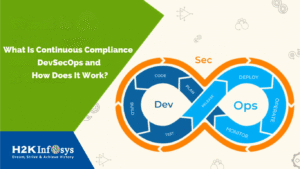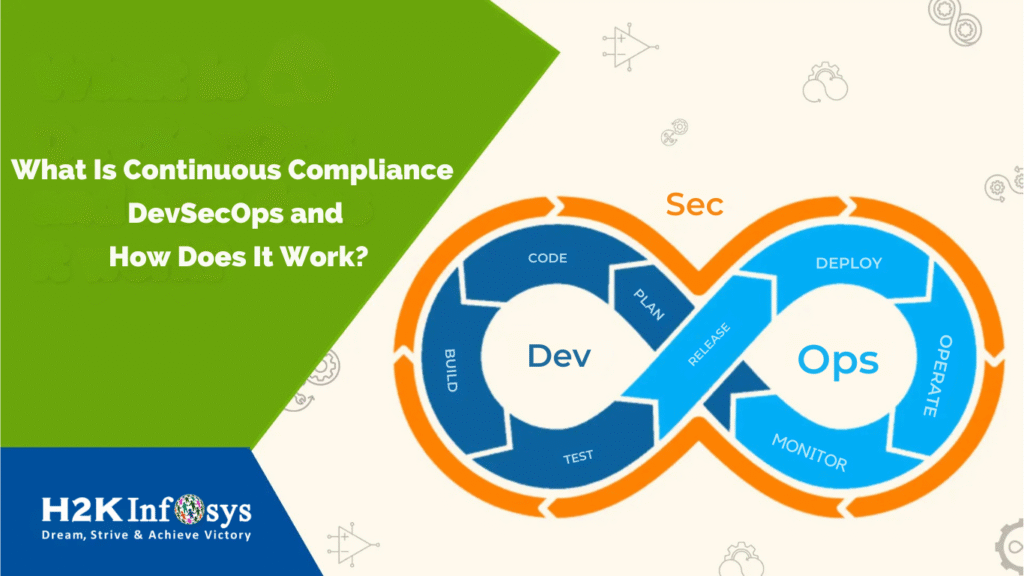The role of a Business Analyst (BA) is pivotal in bridging the gap between technical teams and business stakeholders. Aspiring Business Analysts need to be well-prepared for technical interviews that assess their problem-solving skills, communication abilities, and understanding of both the technical and business aspects of projects. This blog post provides an in-depth overview of the top Business Analysts technical interview questions you may encounter as an aspiring Business Analyst, along with tips on how to answer them effectively.
Introduction
Business Analysts are in high demand as companies across various sectors strive to streamline operations and make data-driven decisions. To secure your first job or advance your career as a Business Analyst, you must be prepared for technical interviews that focus on your ability to understand business processes, utilize technical tools, and analyze data effectively.
While soft skills such as communication and stakeholder management are essential, Business Analysts must also have a strong understanding of technical concepts and analytical frameworks. Employers will test your ability to balance business goals with technical requirements, ensuring you can facilitate smooth project execution.
In this comprehensive guide, we’ll cover:
- Common technical interview questions for aspiring Business Analysts.
- Detailed explanations and sample answers to help you formulate the perfect responses.
- Best practices for preparing for these types of technical questions.
- The value of certifications and training programs in enhancing your Business Analyst career prospects.
By the end of this post, you will have actionable insights to enhance your interview preparation and take meaningful steps toward becoming a certified and highly skilled Business Analyst.
These are some of crucial technical interview questions that will help you gain the knowledge and confidence needed to excel:
Here are Frequently asked technical interview questions:
What Are the Primary Responsibilities of a Business Analyst?
Business Analysts Technical Interview Questions: This question is foundational, allowing the interviewer to gauge your understanding of the role and its core functions. While specific responsibilities may vary between organizations, a Business Analyst’s role typically includes:
- Requirements Gathering: The ability to collect, analyze, and document business needs and translate them into clear technical requirements.
- Stakeholder Communication: Ensuring clear and effective communication between business stakeholders and the technical teams to align project objectives.
- Process Improvement: Identifying inefficiencies within business processes and recommending improvements based on data-driven insights.
Sample Answer:
As a Business Analyst, my primary responsibilities involve gathering requirements from various stakeholders, analyzing these requirements, and ensuring that they align with overall business objectives. In addition, I focus on identifying inefficiencies in existing business processes and recommending data-driven solutions to streamline operations.
Tip: When answering this question, provide real-world examples from your experience or academic projects to demonstrate your understanding of the responsibilities.
Expanded Explanation:
You can also expand on this answer by discussing additional responsibilities such as conducting cost-benefit analysis, creating project plans, and facilitating user acceptance testing (UAT). Highlighting your experience with these tasks will show that you have a broad understanding of the Business Analyst role.
How Do You Manage Requirements Throughout the Lifecycle of a Project?
This question assesses your knowledge of the requirements management process, which includes eliciting, analyzing, validating, and maintaining project requirements. Employers want to see that you can manage requirements effectively across the entire project lifecycle, ensuring that all stakeholders’ needs are met while keeping the project on track.
Sample Answer:
I use a combination of tools and techniques to manage requirements effectively throughout the project lifecycle. I begin by gathering requirements through interviews and workshops, then document them in a format that is clear and understandable to both stakeholders and developers. I use tools such as requirement traceability matrices, use case diagrams, and user stories to ensure that the requirements are tracked and verified throughout the development process. Regular communication with stakeholders is also critical to ensure that any changes are addressed promptly, and the project stays aligned with business goals.
Additional Detail:
Expand on this by discussing how you use specific methodologies, such as Agile or Waterfall, to manage changing requirements. For instance, if you’re working in an Agile environment, you could explain how you use sprints to continually refine and adjust requirements based on stakeholder feedback.
Real-World Example: In a project I worked on at XYZ Corp., we used Agile methodology to manage a complex set of requirements for a new customer relationship management (CRM) system. By using a requirement traceability matrix, we ensured that every user story was aligned with a specific business goal, which helped reduce rework by 20%.
Tip: Always align your answer with the methodology that the company uses, whether it’s Agile, Waterfall, or another approach.
Which Business Analysis Tools Are You Familiar With?
Employers expect Business Analysts to be proficient with industry-standard tools that help in data analysis, project management, and process modeling. To answer this question effectively, not only should you name the tools, but you should also explain how you’ve used them to solve business problems.
Common Tools:
- Microsoft Excel: Widely used for data analysis, pivot tables, and creating visualizations.
- JIRA: An essential tool for managing tasks, especially in Agile environments.
- Tableau/Power BI: Used to create visual data dashboards that help stakeholders understand complex data.
- SQL: Critical for querying databases and extracting meaningful insights from large datasets.
Sample Answer:
I have experience with several tools that are essential to Business Analysts. For example, I am proficient in SQL for querying databases to extract and analyze data. I have used JIRA extensively for managing user stories and tracking project progress in Agile teams. Additionally, I am skilled in using Tableau to create data visualizations that help stakeholders understand performance metrics and make data-driven decisions.
Expanded Answer:
You can also mention other tools such as Visio for process mapping or Trello for task management. If the job description mentions specific tools, be sure to highlight your experience with them. If you don’t have experience with a tool listed in the job description, mention your willingness and ability to learn quickly.
Tip: Tailor your answer to the tools mentioned in the job description and emphasize your practical experience.
Can You Explain a Time When You Faced a Difficult Stakeholder? How Did You Handle It?
Dealing with difficult stakeholders is a common challenge for Business Analysts, as stakeholders often have conflicting interests or resist change. This question is designed to assess your communication and conflict-resolution skills.
Sample Answer:
In one of my previous projects, a key stakeholder was resistant to implementing a new software system because they were concerned about potential disruptions to their team’s workflow. I arranged a one-on-one meeting to better understand their concerns and provided data-backed insights on the long-term benefits of the system, such as increased efficiency and cost savings. By addressing their concerns and providing them with a clear implementation plan that minimized disruptions, I was able to gain their buy-in, which helped ensure the success of the project.
Pro Tip:
Use the STAR method (Situation, Task, Action, Result) to structure your answer. This method allows you to clearly describe a situation, the task at hand, the action you took, and the result of your efforts.
Expanded Answer: If you have multiple examples, consider mentioning another instance where you had to balance conflicting stakeholder priorities or manage unrealistic expectations. This shows that you can navigate different types of challenges.
How Do You Prioritize Tasks in a Project with Tight Deadlines?
Business Analysts frequently have to manage competing priorities and tight deadlines. This question assesses your organizational skills and ability to prioritize tasks effectively.
Sample Answer:
I typically use tools like JIRA and Trello to organize tasks and maintain an updated backlog. To prioritize tasks, I follow the MoSCoW method, categorizing tasks as Must-haves, Should-haves, Could-haves and ‘Won’t-haves.’ In a recent project with a tight deadline, I collaborated closely with stakeholders to identify the most critical deliverables and focused on delivering the Must-haves first while ensuring quality was maintained throughout the project.
Expanded Explanation:
You can also explain how you adjust priorities based on changing business needs. For example, you could mention how you work closely with stakeholders to ensure that the most valuable tasks are completed first and that lower-priority tasks are deferred if necessary.
Tip: If the company follows Agile practices, mention how you use sprint planning sessions to ensure that tasks are prioritized effectively.
How Do You Perform a Gap Analysis?
Gap analysis is a vital tool for Business Analysts, allowing them to identify gaps between a business’s current state and its desired future state. This question tests your ability to analyze processes and recommend improvements.
Sample Answer:
When performing a gap analysis, I begin by identifying the current state of the business through process mapping and data collection. Next, I define the desired future state and identify the gaps between the two. After gathering relevant data from stakeholders, I propose actionable solutions to close these gaps. For instance, in a project for a retail company, I conducted a gap analysis of their supply chain and recommended automating key processes, which led to a 15% reduction in delivery times.
How Do You Ensure Effective Stakeholder Communication in a Project?
Communication is key for a Business Analysts to ensure that all stakeholders are aligned with the project’s objectives. Interviewers will ask this question to evaluate how you manage stakeholder communication, particularly in complex projects with multiple parties.
Sample Answer:
To ensure effective stakeholder communication, I establish a communication plan at the beginning of the project. This plan includes regular check-ins, stakeholder meetings, and status reports to keep everyone informed about project progress. I also use tools like JIRA and Slack for real-time updates and collaboration. In a previous project, I conducted bi-weekly stakeholder reviews and provided detailed reports that helped keep everyone aligned, which ultimately reduced misunderstandings and delays.
Tip: Explain your use of tools and communication strategies that are relevant to the organization you’re applying to.
How Do You Handle Scope Creep in a Project?
Scope creep can disrupt a project’s timeline and budget, making it crucial for Business Analysts to manage changes effectively. This question will test your ability to maintain project focus while accommodating necessary adjustments.
Sample Answer:
Scope creep is a common challenge in projects, and I address it by setting clear project goals and maintaining an up-to-date project backlog. I also work closely with stakeholders to manage expectations and ensure that any changes go through a formal approval process. For instance, in a recent project, we encountered additional feature requests mid-project. By managing these requests through a change control board, we were able to assess their business value and decide whether to include them without affecting the project’s timeline.
Tip: Be sure to mention specific examples of when you handled scope creep and the impact your actions had on the project’s success.
How Do You Conduct a SWOT Analysis?
A SWOT analysis is a strategic tool used to identify an organization’s strengths, weaknesses, opportunities, and threats. This question tests your ability to apply SWOT analysis in practical situations.
Sample Answer:
When conducting a SWOT analysis, I begin by gathering data through stakeholder interviews, market research, and internal performance reviews. I then categorize the information into strengths, weaknesses, opportunities, and threats. For example, in a project where I was advising a retail company, we used a SWOT analysis to identify strengths in their customer service but also recognized a threat from emerging competitors with advanced e-commerce platforms. This led to strategic initiatives to improve their online presence.
Tip: Be specific about the tools and methods you use to gather data and structure the SWOT analysis.
What Role Does Data Modeling Play in Your Work as a Business Analyst?
Data modeling is a critical skill for Business Analysts, especially when working on projects that require system implementations or data analysis. This question tests your ability to work with technical teams and develop data models that meet business needs.
Sample Answer:
Data modeling plays an important role in defining how data will be stored and accessed within a system. I typically use tools like Microsoft Visio or Lucidchart to create Entity-Relationship Diagrams (ERD) that map out data structures. In my previous role, I worked on a CRM implementation where I used data modeling to ensure that customer data flowed seamlessly across departments, improving data accuracy and reporting.
Tip: Demonstrate your experience with specific tools and methodologies relevant to data modeling.
Conclusion
Preparing for technical interviews as a Business Analyst requires a deep understanding of your role, the tools you will use, and the challenges you will face. By practicing common technical interview questions and crafting structured responses, you can improve your chances of securing your dream job. Always back up your answers with real-world examples, and consider investing in certifications and hands-on training to further enhance your skill set.
Business Analysts play a pivotal role in driving project success by bridging the gap between business needs and technical execution. Interviewers want to see that you not only have a solid grasp of the theoretical aspects of the job but that you can apply them effectively in real-world scenarios.
By practicing these key technical interview questions, staying current with the latest tools, and investing in certifications, you’ll be well on your way to becoming a successful Business Analyst.
Key Takeaways
- Business Analysts need strong technical skills and communication abilities to excel in their roles.
- Prepare for interviews by practicing common technical questions and backing up your answers with real-world examples.
- Certification programs can enhance your credibility and increase your chances of landing a job as a Business Analysts.
Call to Action
Ready to take your Business Analyst career to the next level? Enroll in a Business Analysis certification course at H2K Infosys. With expert instructors, hands-on training, and industry-recognized certifications, you’ll be equipped with the skills and knowledge you need to excel in the field. Take the next step in your career and sign up today!

























